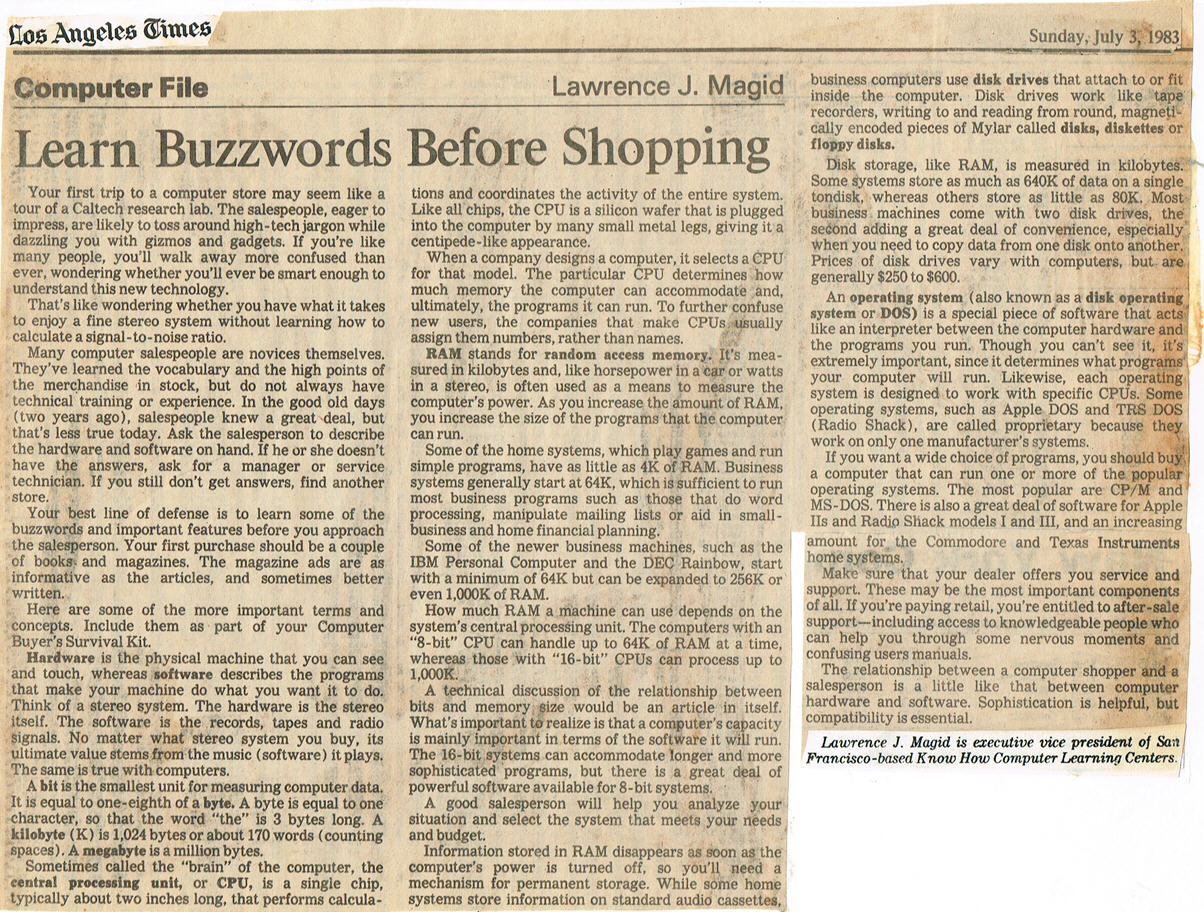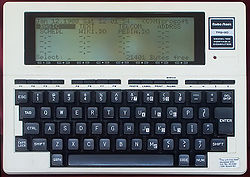
by Larry Magid

This year marks my 30th anniversary as a newspaper technology columnist. It started in the summer of 1983, when I started writing “Computer File” for the Los Angeles Times. The Times syndicated the column which, over the years, appeared in newspapers around the world, including the Washington Post, St. Louis Post-Dispatch, Newsday and the San Francisco Chronicle. My first story in the San Jose Mercury News — an article about “online services” appeared in November 1983.
After the Times approved the column I called a friend to give him the good news and bad news. The good news is that I was a syndicated columnist for some of America’s great newspapers. The bad news was that I had to write about computers.
Good news and bad news
I so-wished that I could cover “important stories” such as international events or political news. Little did I know that this little niche I was covering would eventually become one of the most important beats of our time. Eight years after I started my column, a journalist who had covered the State Department and other important beats for the Wall Street Journal actually chose to switch topics and start writing a personal technology column. Even though I’ve had to compete with him ever since, I am grateful to my friend Walt Mossberg for helping make technology journalism mainstream. Mossberg is leaving the Journal to start a new company with new partners, but assures me that he’ll continue to write tech columns and reviews.
Now it seems as if everyone wants to cover tech. When I started going to the Comdex computer show and the Consumer Electronics Show in the ’80s, the press room was about the size of a typical bedroom. More than 5,000 media covered this year’s CES.

Defining “hardware,” and “floppy disk”
My first L.A. Times column — published July 3, 1983, was called Learn Buzzwords Before Shopping. I defined basic words like “disk” and “hardware” and warned that “your first trip to a computer store might seem like a tour of a Cal-Tech research lab… If you’re like most people you’ll walk away more confused than ever, wondering whether you’ll ever be smart enough to understand this new technology. That would be like wondering whether you have what it takes to enjoy a fine stereo system without learning how to calculate a signal-to-noise ratio.”
Back then many people stored data on audio cassettes. The ones with big bucks bought a “floppy disk” drive.
First truly portable PC
My second column was a review of the Tandy/Radio Shack TRS-80 Model 100. I wrote it during a PSA flight from Los Angeles to San Jose — the first time I ever used a computer on an airplane. This was a 4 pound portable computer that was way ahead of its time. The $1,130 high-end model had 32 kilobytes of storage — today’s least expensive 16 GB iPhones have half a billion times more storage, but if your Model 100 needed more storage, you could always plug-in an optional cassette recorder.
Why do I say it was ahead of its time? The Model 100 could run for up to 20 hours on four AA batteries and, even though it had a tiny eight line, 40-character screen, it had a better keyboard than most of today’s laptops. In some ways it was the opposite of today’s tablets with a great keyboard and not-so-great screen. My favorite feature was its 300 baud modem. Even though it was 100,000 times slower than today’s mid-range cable modems, it was still an incredibly useful way to transfer my articles from the device to the L.A. Times editorial system. The alternative — still used by some in the field back then — was to dictate or mail in copy so that a typesetter could rekeyboard it.
Wow, you can read out-of-town newspapers online
In another column that year, I marveled about how cool it was to use my CompuServe account to read the Washington Post — all the way from California — before the paper hit the streets of our nation’s capital. I wrote at the time, “Futurists have long predicted that citizens will someday routinely use home computers for such tasks as shopping, banking, making travel plans, checking the news and paying bills.” The future has arrived and we now take all of this for granted.
Doing Windows
In December 1983, I wrote a column called “Yes, These Programs Do Windows” about several companies that were showing off software that let you run programs inside Windows. They included two now defunct companies — VisiCorp (the company that marketed VisiCalc, the first spreadsheet) and Quarterdeck Office Systems, plus a company in Washington called Microsoft that showed me a rerelease of its Windows software that was slated to come out the following year. I also pointed out that “Apple Computer, Inc., who’s Lisa was released at the beginning of this year was the first single-user microcomputer to employ this technology.” The Mac came out in 1984.
But some things never change
My Jan. 1, 1984 column was about “big brother” (it was 1984 after all) where I reported on a survey that found that “69% of those surveyed believed that the sort of society depicted by Orwell is at least somewhat close,” while “70% believed that it is likely that ‘the government in Washington will use confidential information to intimidate individuals.’ ”
NSA whistle-blower Edward Snowden was 5 months old when I wrote that.